How to Blanch and Shock Vegetables for Perfect Color and Texture
Blanching is a simple, powerful cooking technique every home cook should know. It means briefly boiling vegetables or fruits, then quickly cooling them in ice water. This quick heat treatment does a lot of good. First, it brightens colors and helps preserve the fresh flavor. It also softens vegetables just enough to make them easier to cook later. Blanching helps stop enzyme actions that can cause loss of taste, color, and texture over time, making it perfect for freezing produce.
But the key step is shocking. After blanching, plunge your food into an ice bath right away. This stops the cooking instantly. Without shocking, your veggies keep cooking in their own heat, which can lead to mushy, overdone results. The cold water also locks in that vibrant color and crispness we love.
Blanching and shocking together give you control. You can prep veggies ahead, freeze them, or simply make your side dishes pop. It’s a quick step that brings big rewards. Once you get the hang of it, you’ll find yourself reaching for blanching whenever you want fresh, tasty veggies that keep their snap and color. Let’s dive in and learn exactly how and when to blanch like a pro!
Reasons For Blanching Foods
| Reason for Blanching | Description | Why It Matters |
|---|---|---|
| Preserve Color | Blanching brightens and locks in the natural vibrant colors of vegetables. | Prevents dullness during freezing or cooking, making food look fresh and appetizing. |
| Stop Enzyme Activity | Heat from blanching halts enzymes that cause spoilage and loss of flavor. | Extends shelf life and maintains taste and texture, especially when freezing. |
| Improve Texture | Softens vegetables slightly, making them easier to cook or eat later. | Prevents mushiness by controlling cooking time and ensures consistent texture. |
| Clean the Surface | Removes dirt and reduces surface bacteria on produce. | Improves food safety and helps prepare food for freezing or further cooking. |
| Prep for Freezing | Prepares produce for freezing by slowing enzyme actions and preserving quality. | Maintains flavor, texture, and nutritional value during long-term storage. |
| Ease Peeling | Blanching softens skins on some fruits and vegetables like tomatoes and peaches. | Makes peeling faster and easier without damaging the flesh. |
Step-by-Step Instructions for Blanching Foods
| Step | Instructions |
|---|---|
| Prepare your food | Wash and trim your vegetables or fruits as needed. Cut them into uniform pieces to ensure even blanching. |
| Boil water | Fill a large pot with water and bring it to a rolling boil. Use enough water so the food can move freely. |
| Prepare an ice bath | Fill a large bowl with ice and cold water. This will be your shocking bath. |
| Blanch the food | Carefully add the prepared food to the boiling water. Keep the water boiling and cook for the recommended time (usually 1 to 7 minutes, depending on the food). |
| Remove promptly | Quickly remove the food from the boiling water using a slotted spoon or wire strainer. |
| Shock the food | Immediately plunge the hot food into the ice bath. Let it sit for the same amount of time it was boiled. This stops the cooking process instantly. |
| Drain and dry | Remove the food from the ice bath and drain well. Pat dry if storing or preparing for cooking. |

How Long Does It Take To Blanch Foods?
One of the most underrated cooking techniques is blanching. A 2-step process where you plunge ingredients into boiling water and immediately stop the cooking by giving them a cold bath.
Chefs and home cooks use blanching for various reasons, including peeling fruits and vegetables, brightening food colors, preparing for freezing, and preparing for mise en place. The numbers below represent times for water blanching. There are other blanching methods using steamers and microwave ovens, but I prefer boiling water.
It’s also important to note that it is essential to blanch at a rolling boil, so if you are blanching in batches, ensure you bring the water back to a rolling boil before adding new ingredients.
Lastly, these blanching times come from various sources like the National Center for Home Food Preservation and the University of Minnesota. Still, none of these sites offer amounts to go with the times.
It makes sense, though; the more stalks of asparagus you add to the pot, the time should take longer than if you just blanched one item.
So you can use these times as guidelines and note your experiences for future blanching.
| Vegetable / Fruit | Blanching Time |
|---|---|
| Artichoke Hearts | 7 minutes |
| Artichoke – Jerusalem | 3 to 5 minutes |
| Asparagus – small stalk | 2 minutes |
| Asparagus – medium stalk | 3 minutes |
| Asparagus – large stalk | 4 minutes |
| Beans – snap, green, or wax | 3 minutes |
| Beans – lima, butter, or pinto - small | 2 minutes |
| Beans – lima, butter, or pinto - medium | 3 minutes |
| Beans – lima, butter, or pinto - large | 4 minutes |
| Broccoli (flowerets 1 1/2 inches across) | 3 minutes |
| Brussels sprouts – small heads | 3 minutes |
| Brussels sprouts – medium heads | 4 minutes |
| Brussels sprouts – large heads | 5 minutes |
| Cabbage or Chinese cabbage – shredded | 1 1/2 minutes |
| Cabbage or Chinese cabbage – wedges | 3 minutes |
| Carrots – small, whole | 5 minutes |
| Carrots – diced, sliced, or lengthwise strips | 2 minutes |
| Cauliflower (flowerets, 1 inch across) | 3 minutes |
| Celery | 3 minutes |
| Corn-on-the-cob – small ears | 7 minutes |
| Corn-on-the-cob – medium ears | 9 minutes |
| Corn-on-the-cob – large ears | 11 minutes |
| Eggplant | 4 minutes |
| Greens – collards | 3 minutes |
| Greens – all other | 2 minutes |
| Kohlrabi – whole | 3 minutes |
| Kohlrabi – cubes | 1 minute |
| Okra – small pods | 3 minutes |
| Okra – large pods | 4 minutes |
| Onions (blanch until center is heated) | 3 to 7 minutes |
| Onion rings | 10 to 15 seconds |
| Parsnips | 3 minutes |
| Peas – edible pod | 2 to 3 minutes |
| Peas – green | 1 1/2 to 2 1/2 minutes |
| Peppers, sweet – halves | 5 minutes |
| Peppers, sweet – strips, or rings | 3 minutes |
| Potatoes | 3 to 5 minutes |
| Rutabagas | 3 minutes |
| Soybeans – green | 5 minutes |
| Squash – Summer | 3 minutes |
| Turnips | 3 minutes |
| Fruit Blanching Times | |
| Tomato (for peeling) | 30 seconds |
| Apples (for peeling) | 30 seconds |
| Peaches (for peeling) | 30 seconds |
| Pears (for peeling) | 30-60 seconds |
How Blanching Brightens and Fixes Color
When we talk about brightening and fixing color, we’re talking about the color green in vegetables like broccoli, spinach, kale, green beans, peas, etc. Have you ever noticed that orange carrots and peppers are bright orange, red peppers are bright red, and yellow peppers are bright yellow, but green vegetables are dull-looking?
That’s because, even though the green of the chlorophyll in those plants provides the green color, small air pockets cloud the color. A quick plunge into boiling water bursts some outer cell walls, allowing the air to escape and letting the true bright green of the chlorophyll shine through.
If you’ve boiled green vegetables too long, you know they turn from a bright, vibrant green to a dull olive green. To prevent this from happening, remove the food you are blanching to an ice bath when it is still bright green. For tender greens like basil or spinach, this can be as little as 30 seconds.
For more substantial green vegetables such as peppers, broccoli, or green beans, expect to blanch for up to two to three minutes. The main thing to remember is not to walk away and to shock them in ice water as soon as they are a lovely bright green.
Blanching not only brightens but also fixes the color. This means blanched vegetables do not turn brown over time like raw vegetables. All fruits and vegetables contain enzymes that, if left unchecked, break down the foods into a brown, slimy mess.
Raising the temperature of the food to over 120°-140°F (depending on the enzyme) essentially denatures or turns off the enzymes so that the food does not brown.
How Blanching Makes It Easier to Peel Thin-Skinned Fruits and Vegetables
When you boil any fruit or vegetable, it cooks from the outside (the part closest to the boiling water). So, putting fruits or vegetables in boiling water for just a minute or two before putting them into ice water allows the very outer part of the fruit, the part under the skin, to become soft.
Once that happens, it becomes straightforward to peel the thin skins off of these fruits and vegetables; the skin will easily pull away from the very thin and very soft cooked layer.
To make it even easier to peel, use a sharp knife to cut an X in the bottoms of the food you are blanching: peaches, nectarines, apricots, tomatoes, cipollini, or pearl onions. Then, once you have stopped the cooking process in the ice bath, use a sharp paring knife to pull up the edges of the skin where you made the X and peel away.

Blanching Helps You Achieve a Crisp-Tender Texture
While tender raw vegetables such as spinach, arugula, and other herbs and lettuce do not need to be cooked to be enjoyed, denser vegetables can benefit from a short blanch, even if they are to be served cold. Take the time to blanch green beans, broccoli, cauliflower, peppers, or other vegetables before adding them to a cold salad or crudités platter. You will notice that the blanched vegetables are sweeter and have a pleasing “crisp-tender” texture.
Your blanched vegetables will be sweeter because some cell walls will rupture, releasing sugars and other flavor compounds. They will be crisp-tender because the outer part of the vegetables will be tender from being cooked while the interior is still crisp and raw-tasting. Crisp-tender is to vegetables what al dente is to pasta.
While it takes longer to achieve crisp-tender than to blanch to peel, generally speaking, a vegetable will be crisp-tender at about the same time it becomes a beautiful, bright green color. For vegetables that are not green, such as cauliflower, allow 2-3 minutes.
The best test for crisp-tender is tasting, so do not hesitate to remove the food to taste during the cooking process and remove it to an ice bath when you are happy with the texture.
Blanching Foods Helps with Your Mise en Place
This reason for blanching is similar to blanching to achieve a crisp-tender texture but assumes that the food will be further cooked later. It is almost exclusively used in restaurant kitchens but is an excellent learning technique for home cooks. For example, say there is a dish that has boiled potatoes as a side. The dish takes 7 minutes to cook, but the potatoes take 12 minutes.
Ideally, the main and the side should both be ready at the same time. An easy way to ensure this is to blanch or parboil the potatoes in boiling water for 5 minutes and then shock them to stop cooking.
Then, when someone orders that dish, each component will be ready in 7 minutes. Blanching is only called parboiling when foods will be further cooked later. Otherwise, it is precisely the same technique.
How often will you have to use this technique at home? Probably not very often, but it is a valuable technique to have in your arsenal for holiday gatherings or dinner parties where it pays to get as much prep out of the way as possible, so you don’t find yourself chained to the stove when your guests arrive.
You should experiment with blanching to see if it helps save a little time.
See String Beans with Sauteed Tomatoes & Garlic. This technique can be helpful if you make a lot of stir fry. Before you stir fry, blanch cut-up firm vegetables such as carrots, cauliflower, and broccoli for 2-3 minutes and then shock in cold water.
When it’s time to stir fry, you can put all the tender and firm vegetables into the wok or stir fry pan simultaneously instead of adding the firmer vegetables first. This simplifies the cooking process and helps you get dinner on the table much faster, especially if you did the blanching a day or two beforehand and refrigerated your vegetables.
How to Blanch Foods to Prepare Foods for Freezing
As mentioned above, blanching can turn off enzymatic activity and prevent browning. This is particularly important in freezing fresh fruits and vegetables because enzymes still function at freezer temperatures. Unfortunately, this means that, over time, your lovely summer peaches will turn brown, even after you have “safely” frozen them.
Blanching foods for freezing is the same as any other blanching. If necessary, cut the food to a uniform shape and submerge food in batches into vigorously boiling water for about 2 minutes – enough time to denature the enzymes.
Remove the food to an ice bath to stop the cooking process. Next, dry the food thoroughly and freeze it in a single layer on a parchment-lined baking sheet. Once the food is frozen, you can store it in freezer bags or other containers. However, the cell walls of fruits and vegetables will be damaged by ice crystal formation in the freezer. Because of this, once thawed, most fruits and vegetables will become soggy and are best suited to stews and soups (in the case of vegetables) and pies or muffins (in the case of fruits).
The faster you can freeze food, the smaller the ice crystals and the less damage to cell walls. Freezing foods in a single layer can minimize damage to the cell walls, but home freezers do not freeze foods quickly enough to eliminate damage.
How and Why to Blanch Foods in Fat
Fat blanching is very different from boiling water blanching. While water blanching is used for many purposes, fat blanching is a method to partially cook a dense vegetable without browning it. The only case of fat blanching I know of is making delicious French fries.
The secret is a two-stage frying method. The first stage – the blanch – happens at a lower temperature to cook the potato all the way through, while the second fry happens at a higher temperature and provides a deep golden-brown color.
To make great fries, cut and dry your potatoes well. Blanch them for 4-5 minutes in oil, which is about 325F. Remove to paper towels. At this point, you can finish cooking them later or continue.
Heat the same oil to about 370°F and fry for an additional 2-3 minutes until deeply golden brown. Drain and add salt and any additional seasonings.
This technique can also be employed when frying any dense vegetable, such as sweet potatoes, parsnips,s or even turnips.
A Note About Salt
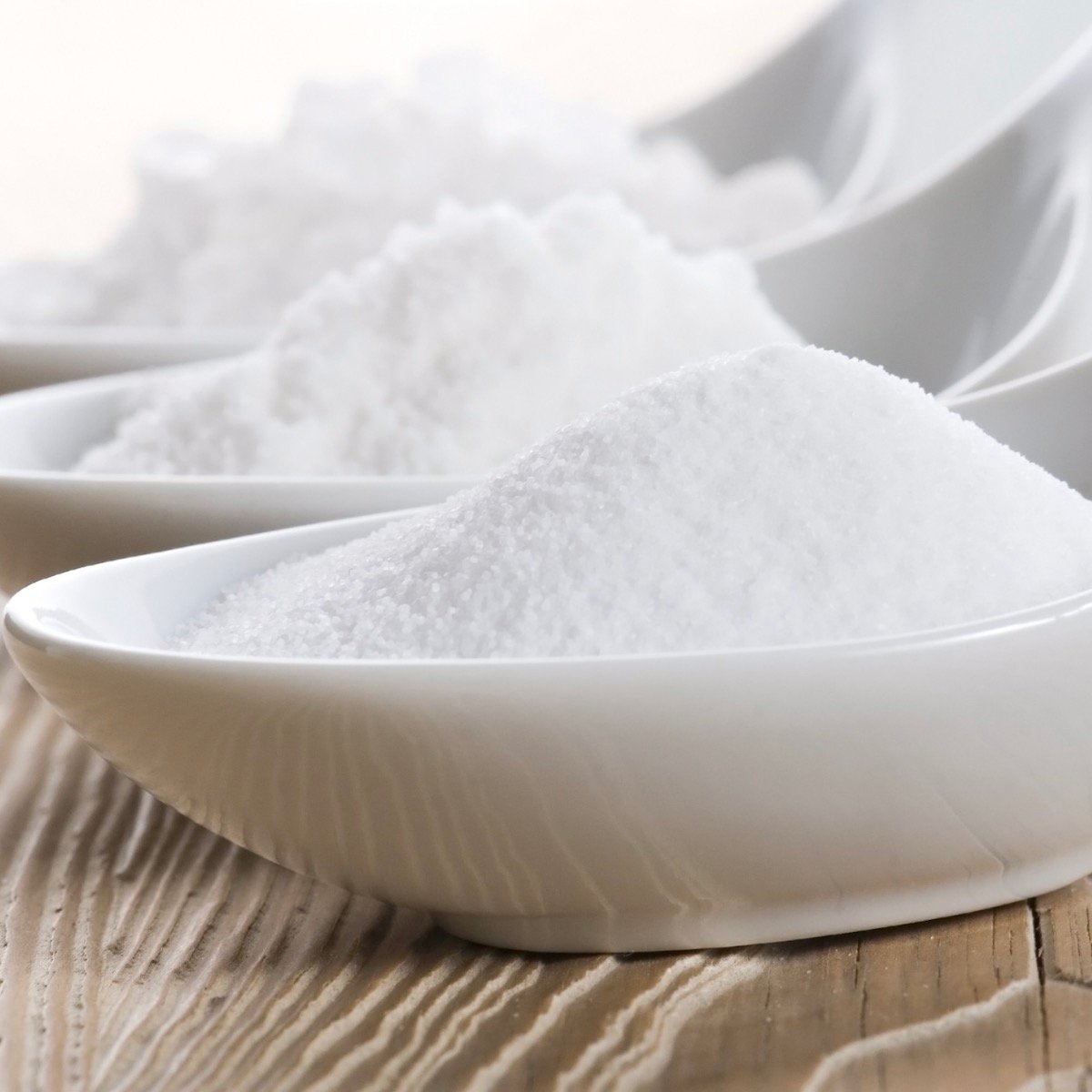
Blanching water should be very salty. Some say, “ten times saltier than ocean water.” Of course, that is a lot of salt, but there are several good reasons for salting your blanching water well. First of all, salty water is denser than unsalted water–it’s why we’re so much more buoyant at the beach.
The salty water on the outside of the food is denser than the water inside, so it helps prevent nutrients from leaching out of the food into the water. But, of course, after a certain point, nutrients will leach out. But, since blanching is such a quick cooking technique, it is of little concern.
Another good reason to use well-salted water is that salt helps keep green vegetables greener. Again, since blanching is a quick process, it takes little time for vegetables to go from bright green to olive drab–maybe just 2-3 minutes–so using very well-salted water helps ensure your vegetables stay nice and green.
There is a scientific reason for this concerning the magnesium at the heart of chlorophyll molecules. Suffice it to say that salting your blanching water helps keep the magnesium in the chlorophyll where it belongs, keeping things nice and green.
A third, though arguably less critical, reason to use very salty water for blanching is that, since the process is so short, the food needs more time to absorb much flavor. Therefore, over-salting the water (seasoning-wise) allows more salt to flavor the food briefly.
So, how much salt should you add to your blanching water? It’s a personal preference, but start with one tablespoon of salt per gallon of water and then go from there.
Final Thoughts
Now that you are more familiar with blanching, I hope you can see its time-saving and money-saving possibilities. For example, par-cooking some of your vegetables for a Thanksgiving or Christmas meal might make your life easier.
Blanching some broccoli or green beans for a salad makes them vibrant green, but it might eliminate some of those enzymes that make some of these cruciferous vegetables hard for some of us to digest.
Blanching before freezing can help prevent your bumper crop of cauliflower from going bad, even in the deep freeze.
And, for those of you who have made a right mess of a peach when trying to peel it, myself included, blanching can be the technique that turns the idea of making a fresh peach cobbler from “No way!” to “A Walk in the Park.”

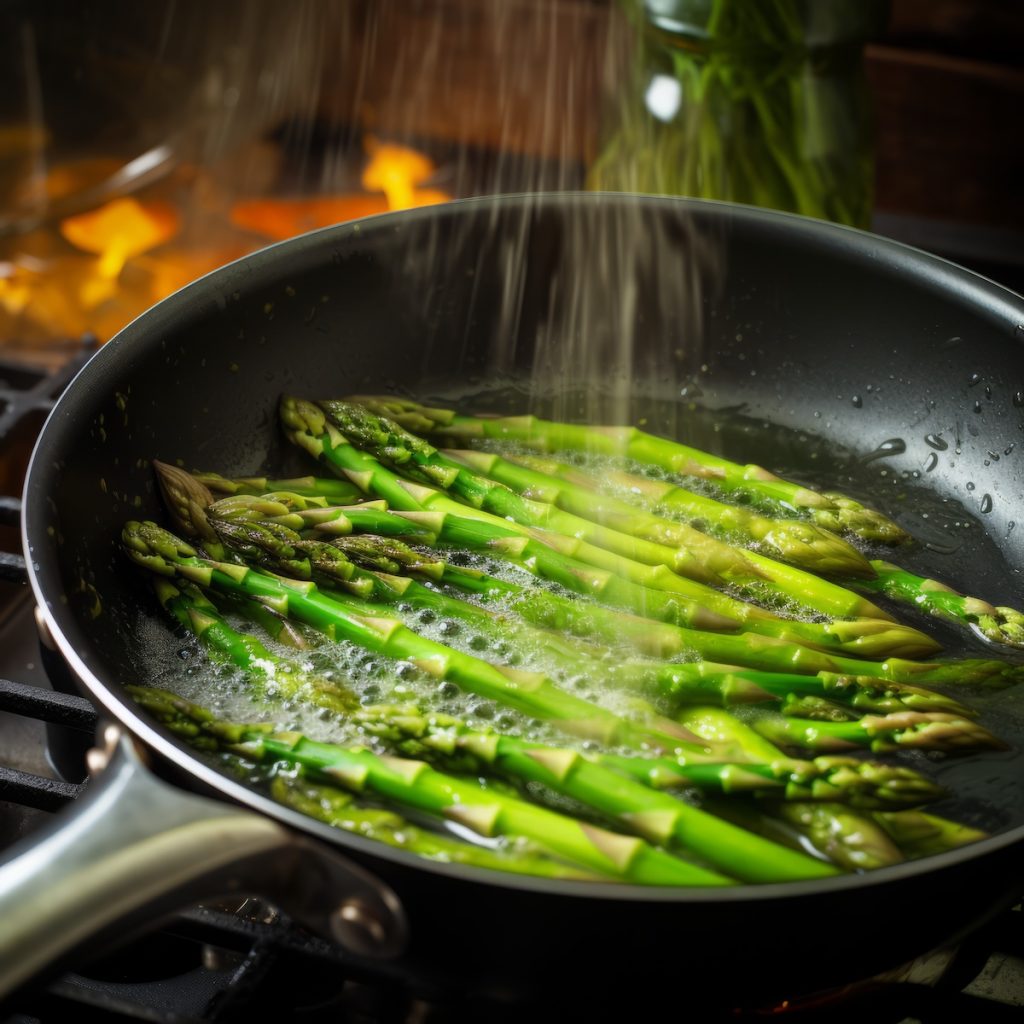
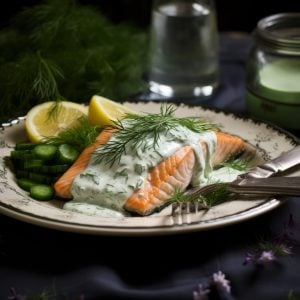
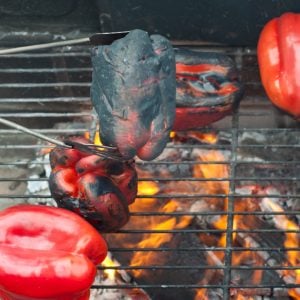
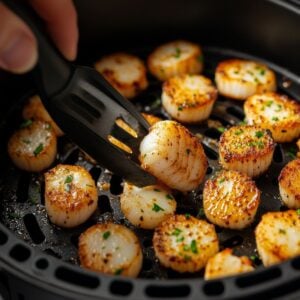
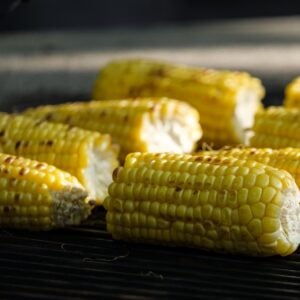
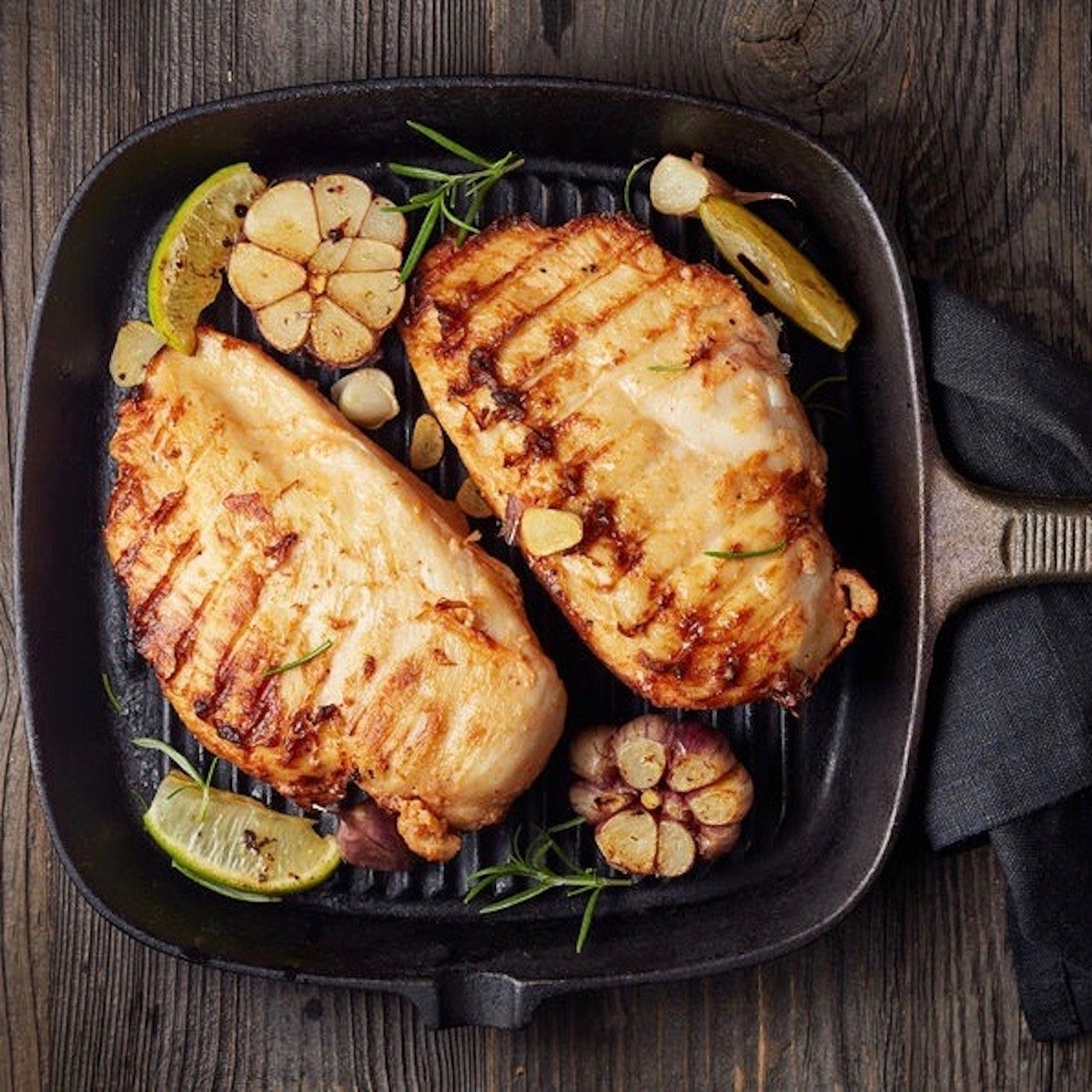
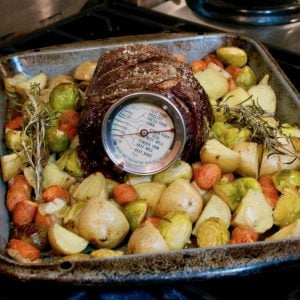
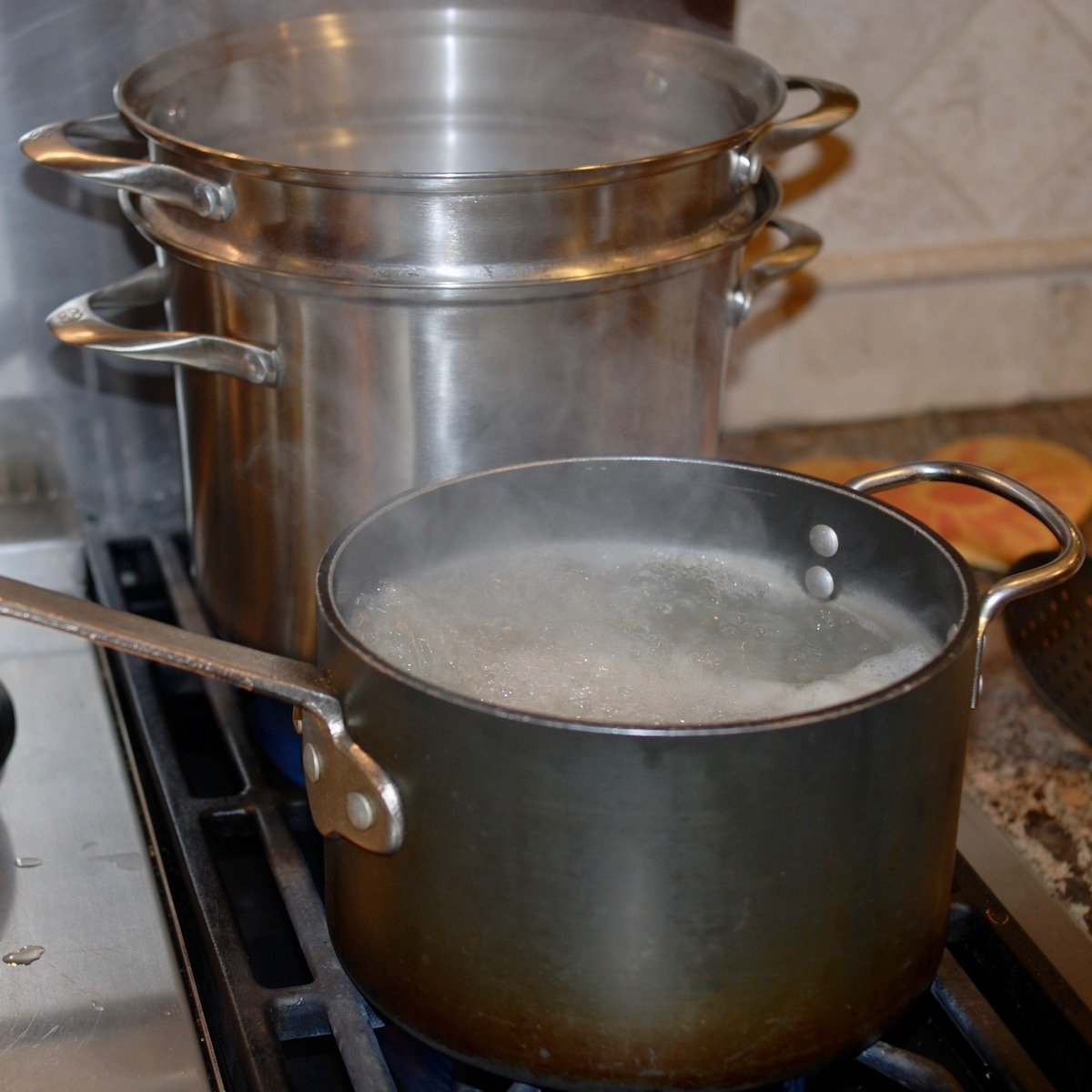
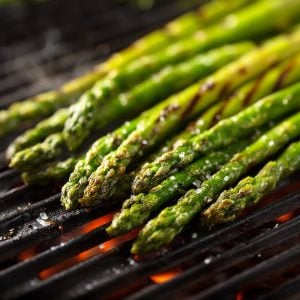

11 Responses
this website is wonderful! I found out about why to blanch spinach before stir-frying. Will look for other kinds of information thank you.
Thanks very much for a very thorough, very informative article. I just made some kale pesto, and I blanched the garlic and the kale in the process. The kale is a very satisfying bright green, as is the finished pesto. I appreciate your comments immensely. Allie Kay
Well written and concise, thank you! I’ve been cooking for a long, long time, but only recently have begun the journey refinement and deeper understanding of the hows and whys we do or don’t do some things. Soooooo. Have you ever wondered about that super-clean, acid-washed feeling on your teeth after eating fresh sauteed spinach, chard or kale? Oxalates!! Or oxalic acid (i think.) I can’t explain the chemistry or technical aspects of this, but my loose understanding is that they do already exist in our bodies and are normally excreted without issue. Certain issues like stones, leaky gut and other digestive issues can be exacerbated by high oxalate intake. It appears that oxalic acid is an oxidant.
Long story short, BLANCH YOUR LEAFY GREENS!!! Yeah, I know, i used to really enjoy semi crispy spinach, but after blanching a few times, WOW!! I FEEL so much better after I eat them. My teeth don’t feel acid-washed and I don’t bloat or belch. Try doing chard both ways and you’ll see what I mean. Wash it well, prepare one bunch the old way. Take the other bunch and blanch the whole leaves, stems and all. Pull it out and rinse under cold water (i don’t have an ice maker anymore and I cook it right away anyway.) Right when you pull it, throw some onions in a hot pan with your favorite fat. Drain the chard as well as possible without going to the hassle of actually drying it. Starting with the stems, chop fine until you get to the leaf then chop roughly, about half to one inch strips. Throw some minced garlic in the pan and when it’s done releasing it’s strong aroma, throw in the chard. You don’t have to cook this very long, I usually give it 5 to 6 minutes for tender-almost-crispy, or if the wife is sharing, I cook it til it’s dead, 15 min or more (that’s a whole other story, but a pertinent one if you or a loved one has gut issues like mine.) Can be seasoned in the usual multitude of ways, I happen to love any kind of toasted nuts and crumbly goat cheese. Hope this was helpful.
I had heard that blanching lowers the oxalates in many high oxalate foods like spinach and green chard. When I put oxalates in your Search window, it brings me back to this page about blanching but I did not see any reference to oxalates at all in this page.
Can you help clarify?
Thanks.
Kailash
Hi Kailash,
Yes, blanching can reduce oxalate levels in certain vegetables. Oxalates are naturally occurring compounds found in foods like spinach, beet greens, and Swiss chard. High oxalate intake can contribute to kidney stone formation in susceptible individuals.
Blanching vegetables involves briefly boiling them, which helps leach some of the water-soluble oxalates into the boiling water. When you discard that water after blanching, you remove a portion of the oxalates. Research shows blanching can reduce soluble oxalate content by about 30-87%, depending on the vegetable and blanching time.
However, the exact reduction varies with the type of vegetable and the blanching method used. Steaming or microwaving, which use less water, generally reduce oxalates less than blanching in boiling water.
So, if you’re looking to lower oxalate intake, blanching is a helpful step, especially for high-oxalate leafy greens. Just be sure to discard the blanching water to effectively remove the leached oxalates.
I just saw that the reference to oxalates was in Terry’s post above!
Thanks.
Kailash
Can you blanch grains like brown rice and millet , before cooking them? Can this be an alternate method to soaking?
Thank you,
Kailash
Hi Kailash, great question. Blanching grains, such as brown rice or millet, isn’t a traditional method, but it can serve as a quick alternative to soaking in some cases. By briefly boiling the grains for 1–3 minutes and then shocking them in cold water, you slightly soften the outer layer, rinse away surface starches, and begin hydration. This can mildly reduce cooking time and remove a small amount of anti-nutrients, such as phytic acid, although not as effectively as soaking. It’s especially useful for small grains like millet when you’re short on time or forgot to soak. However, blanching won’t provide the full benefits of soaking or fermenting, which better reduce anti-nutrients and improve digestibility. Still, it’s a helpful prep step when you need a quick boost.
Thank you it is helpful am gonna practice and enjoy.
This is an excellent tutorial on blanching. Thank you so much. It’s exactly what I needed to reference when dealing with freezer meal prep.
You are very welcome Gwen. Thanks for your comments.